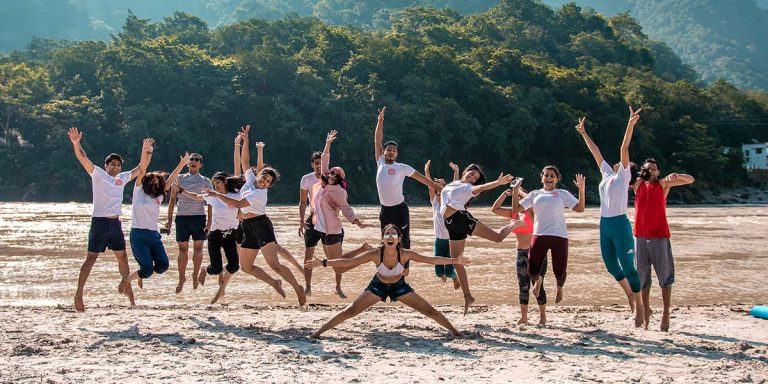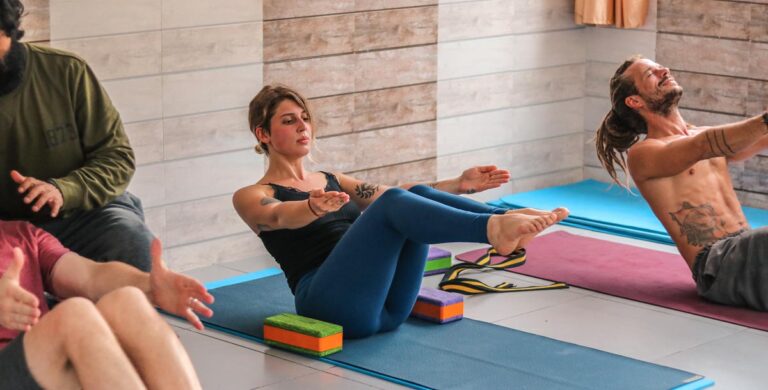Yoga Styles Unveiled: A Comprehensive Guide to Choosing the Best Teacher Training Program in Rishikesh, India
The Importance of Choosing the Right Yoga Style for Teacher Training
So, you’ve made the decision to become a yoga teacher and you’re considering Rishikesh, India as your destination for teacher training. Congratulations on taking this step towards deepening your practice and sharing it with others! Rishikesh is certainly a popular choice for yoga teacher training, as it is considered the “Yoga Capital of the World”.
The town, nestled in the foothills of the Himalayas along the banks of the sacred Ganges river, has been attracting spiritual seekers and yogis for decades. One of the key factors to consider when choosing a yoga school in Rishikesh is what style of yoga you want to study.
Each style has its own unique benefits and philosophy, so it’s important to choose one that resonates with you on a personal level. Remember: you will be learning how to teach this style to others!
Why Not Choose Based on Popularity?
You may be tempted to simply choose the most popular style of yoga or go with whatever your favorite celebrity yogi practices. However, that approach can lead to disappointment if you find out later that the style doesn’t align with your personal values or goals as an instructor.
Hatha Yoga: The Classic Practice
Let’s start by looking at Hatha Yoga – arguably one of the most classic forms of yoga. Hatha Yoga focuses on holding postures (asanas) for longer periods of time while also incorporating breathwork (pranayama) and meditation.
It’s a great option if you’re interested in developing strength and flexibility while also learning techniques for relaxation. In Rishikesh, there are several well-known schools that offer Hatha Yoga teacher training programs.
Some examples include Sivananda Yoga Vedanta Center, Rishikesh Yog Dham, and Om Shanti Om Yoga School. These schools generally follow the teachings of Hatha Yoga Pradipika, an ancient text that outlines the principles of Hatha Yoga.
Ashtanga Yoga: The Athletic Practice
If you’re looking for a more athletic and rigorous practice, you may be interested in Ashtanga Yoga. This style involves a set sequence of postures that are performed in a flowing sequence with synchronized breath (known as vinyasa). Ashtanga Yoga is a great option if you’re interested in building strength and stamina.
In Rishikesh, some popular schools for Ashtanga Yoga teacher training include Tattvaa Yogashala, Arogya Yoga School, and Rishikul Yogshala. These schools often follow the teachings of Sri K Pattabhi Jois, who is credited with bringing Ashtanga Yoga to the West.
Vinyasa Flow: The Creative Practice
Vinyasa Flow is a more modern interpretation of yoga that focuses on fluid movement and creative sequencing. In this style, postures are linked together in a seamless flow with emphasis on breath awareness and alignment. Vinyasa Flow is a great option if you’re interested in incorporating your own creativity into your practice or teaching.
In Rishikesh, some well-known schools for Vinyasa Flow teacher training include Chandra Yoga International and Himalayan Holistic Yoga School. These schools often combine traditional elements of yoga with modern movement practices like dance or martial arts.
Iyengar: The Precise Practice
Iyengar yoga is known for its precision and attention to detail when it comes to alignment and posture. In this style, props like blocks and straps are often used to help practitioners achieve correct alignment. Iyengar Yoga is a great option if you’re interested in developing a strong foundation for your practice or teaching.
In Rishikesh, some popular schools for Iyengar Yoga teacher training include Rishikesh Yog Peeth and Akshi Yogashala. These schools often follow the teachings of BKS Iyengar, who developed this style of yoga in the 1970s.
Kundalini: The Spiritual Practice
Kundalini Yoga is a spiritual and meditative practice that focuses on activating the “kundalini energy” located at the base of the spine. It involves dynamic movements, breathwork, and chanting to awaken this energy and move it up through the chakras (energy centers) of the body. Kundalini Yoga is a great option if you’re interested in exploring spirituality or incorporating mantra into your practice or teaching.
In Rishikesh, some popular schools for Kundalini Yoga teacher training include Rishikul Yogshala and Avatar Yoga School. These schools often follow the teachings of Yogi Bhajan, who brought Kundalini Yoga to the West in 1969.
Yin & Restorative: The Relaxing Practice
Yin & Restorative yoga are great options if you’re looking for a more relaxing and gentle practice. In these styles, postures are held for longer periods of time with support from props like blankets and bolsters. Yin & Restorative yoga are great options if you’re interested in incorporating mindfulness practices or learning techniques for relaxation into your practice or teaching.
In Rishikesh, some popular schools for Yin & Restorative yoga teacher training include Anadi Yoga Center and Association of Yoga Meditation & Therapy. These schools often combine traditional yoga practices with elements of Ayurveda or traditional Chinese medicine.
Conclusion: Consider Your Goals and Values
There are many different styles of yoga to choose from when it comes to teacher training in Rishikesh. The most important thing is to choose a style that aligns with your personal goals and values as a practitioner and instructor. Do your research, read reviews, talk to teachers, and trust your intuition when making this decision.
Hatha Yoga: The Classic Style of Yoga
Hatha yoga is a classic style of yoga that dates back to the early 15th century in India. The word “hatha” comes from the Sanskrit words “ha” meaning sun and “tha” meaning moon, representing the balance between opposing forces.
It is a slow-paced, gentle form of yoga that focuses on basic postures and breathing techniques to help practitioners achieve physical and mental balance. The benefits of practicing and teaching Hatha yoga are numerous.
It can help improve flexibility, strength, balance, and posture. It also promotes relaxation, reduces stress levels, improves breathing patterns, and boosts overall well-being.
Rishikesh is known as the birthplace of Hatha yoga, making it an ideal destination for those seeking to learn more about this practice through teacher training programs. Some popular Hatha yoga schools in Rishikesh include the Sivananda Ashram Yoga Vedanta Centre, Parmarth Niketan Ashram, and Patanjali International Yoga Foundation.
Learning at Sivananda Ashram Yoga Vedanta Centre
Sivananda Ashram Yoga Vedanta Centre is a renowned institution for Hatha yoga teacher training in Rishikesh. Their comprehensive program covers all aspects of traditional Hatha yoga including asanas (postures), pranayama (breathing exercises), meditation techniques as well as thorough teachings on yogic philosophy. Their experienced teachers provide personalized attention to each student ensuring they progress according to their pace while maintaining quality standards expected from a prestigious institution like Sivananda.
Classes here tend toward being physically demanding with detailed alignment instructions to challenge even experienced practitioners. The ashram operates on an all-encompassing approach to teaching that extends beyond postures into diet and lifestyle modifications which enables learners to grow holistically.
Parmarth Niketan’s Holistic Approach
Parmarth Niketan Ashram offers an immersive and holistic teacher training program that emphasizes the traditional philosophy of yoga. Their Hatha yoga classes are a blend of classical postures combined with meditation, relaxation, and pranayama techniques.
The center’s approach to teaching is aimed at empowering learners with knowledge on how to adopt yogic practices into their daily life for overall wellness. Students learn about healthy eating habits, mindfulness, and the art of living which is in line with ancient yogic principles.
The facility’s serene environment helps create an ideal atmosphere for reflection and deepening personal practice. The ashram has modern facilities including a swimming pool and a beautiful garden creating an oasis of calm that makes the learning experience quite phenomenal.
Patanjali International Yoga Foundation’s Unique Style
Patanjali International Yoga Foundation is another well-known center in Rishikesh offering Hatha yoga teacher training programs. Their program combines traditional Hatha yoga techniques with Ayurveda to develop a unique style that focuses on healing through self-care. Students learn about Ayurveda health practices like herbal medicine, detoxification, and cleansing techniques to enhance their body’s capacity for self-healing.
Additionally, they are taught to incorporate these practices into their teaching methods making them more well-rounded instructors. Their approach makes them stand out from other schools in Rishikesh as they enable students to gain proficiency not only in traditional Hatha postures but also holistic healing practices backed by ancient Indian wisdom that would benefit both their physical health and spiritual growth.
Conclusion
If you’re looking for authentic teacher training programs that cover traditional Hatha yoga teachings from all angles then Rishikesh is the place to be. With its rich history rooted in this classic style of Yoga Hatha it’s no surprise top schools such as Sivananda Ashram Yoga Vedanta Centre, Parmarth Niketan Ashram, and Patanjali International Yoga Foundation are situated here. These schools offer immersive programs that provide a good balance of theoretical knowledge and practical application of yogic principles.
This approach ensures students leave with a deeper understanding of the practice that expands beyond the physical postures but also includes dietary and lifestyle modifications for overall wellness. If you’re passionate about learning traditional Hatha yoga from expert instructors in an authentic setting then Rishikesh is a must-visit destination for your teacher training journey.
The Rigorous and Rewarding Ashtanga Yoga
A Brief Introduction to Ashtanga Yoga
Ashtanga Yoga, also known as “Eight-Limbed Yoga,” is a physically demanding practice that emphasizes a continuous flow of movement and breath. It was developed by Sri K. Pattabhi Jois in the early 20th century and is inspired by ancient texts such as the Yoga Korunta. The practice consists of six series of postures, each building on the previous one, with the first series being the foundation for all subsequent ones.
The Benefits of Ashtanga Yoga
Ashtanga Yoga can be an incredibly rewarding practice for those who want to build strength, flexibility, and endurance. Due to its fast-paced nature, it can also help improve cardiovascular health and stamina. Additionally, Ashtanga Yoga encourages self-awareness and discipline through its strict adherence to a set sequence of postures.
For those interested in teaching yoga, Ashtanga can provide a strong foundation for developing classes that are challenging yet accessible to students at all levels. The emphasis on proper alignment and breath control can also help teachers develop their own skills in these areas.
Popular Ashtanga Yoga Schools in Rishikesh
Rishikesh is known for its many yoga schools catering to students from around the world. Some popular schools that offer Ashtanga training include: – Shrimath Yogendra Mahadev Ashram: This school offers traditional Ashtanga classes led by experienced teachers who have studied directly under Pattabhi Jois.
- Tattvaa Yogashala: Located near the Ganges River, this school offers intensive 200-hour and 300-hour Ashtanga teacher training courses. – Rishikesh Yog Peeth: This school offers both beginner-level and advanced-level Ashtanga courses, as well as courses in other yoga styles.
Final Thoughts on Ashtanga Yoga
Ashtanga Yoga is not for the faint of heart, but for those who are willing to put in the time and effort to master the practice, it can be a deeply transformative experience. Whether you want to deepen your personal practice or become a yoga teacher, Ashtanga can provide you with the physical and mental tools necessary to achieve your goals. Just remember to always listen to your body and take things at your own pace.
The Thrill of Vinyasa Flow Yoga
Vinyasa Flow Yoga is a dynamic, fast-paced style that synchronizes breath and movement to create a flowing sequence of postures. It was popularized in the West by influential teachers such as Baron Baptiste and Shiva Rea, who added their own unique flavors to the traditional Ashtanga Vinyasa Yoga system.
Unlike Ashtanga, which follows a set sequence, Vinyasa is more free-form and allows for creativity in sequencing. The history of Vinyasa Flow Yoga is relatively new compared to other styles.
It was born out of Ashtanga Yoga in the 1980s when yoga teachers started playing with different sequences to create more variety in their classes. The flowing nature of Vinyasa appeals to those who find traditional styles too rigid or slow-paced.
One of the main benefits of practicing and teaching Vinyasa Flow Yoga is its versatility. Its fluidity allows for endless possibilities in sequencing, so no two classes are ever the same.
This keeps students engaged and challenged while improving their strength, flexibility, and cardiovascular health. Teaching Vinyasa requires skillful sequencing and transitions that flow seamlessly from one posture to another.
It also involves cueing breath with movement to keep students focused on their breath throughout the practice. Many teacher training programs offer comprehensive instruction on how to teach this style effectively.
Rishikesh has several popular schools that specialize in teaching Vinyasa Flow Yoga. Among them are Rishikesh Yog Dham, Tattvaa Yogashala, and World Peace Yoga School.
Each school offers its own unique approach but all share a commitment to providing high-quality training that prepares students for success as yoga teachers. If you’re looking for a style that challenges you physically while allowing room for creativity and self-expression, then Vinyasa Flow Yoga might be just what you need.
Its dynamic, flowing nature makes it a popular choice for both students and teachers alike. So why not give it a try and see what all the fuss is about?
Iyengar Yoga
The Precision and Discipline of Iyengar Yoga
Iyengar Yoga is a style that emphasizes precision and alignment, making it a favorite among those who want to deepen their understanding of yoga poses. This style was developed by B.K.S. Iyengar, who is considered one of the most influential yoga teachers in the world.
The practice of Iyengar Yoga involves the use of props such as blocks, straps, blankets, and chairs to support practitioners in achieving proper alignment in each pose. This attention to detail requires discipline and patience, as each pose is held for an extended period of time.
Benefits of Practicing Iyengar Yoga
Practicing Iyengar Yoga has numerous benefits for both the body and mind. The precision required helps to improve posture, increase flexibility, build strength, and reduce the risk of injury. Additionally, this style has been shown to be effective in managing stress and anxiety by promoting relaxation through deep breathing techniques.
By using props for support, practitioners can modify poses according to their individual needs and abilities. This makes Iyengar Yoga accessible to people at all levels of fitness and experience.
Teaching Iyengar Yoga
I have found that teaching Iyengar Yoga requires a high level of knowledge about anatomy and physiology as well as an understanding of how different bodies respond to different types of movements. It’s important for teachers to be able to demonstrate proper alignment while also offering modifications for students with injuries or physical limitations.
In Rishikesh, there are several popular schools that offer teacher training programs in this style. Some notable ones include Rishikesh Yog Peeth and Omkarah Yoga Mandiram.
: Is Iyengar Right for You?
I highly recommend Iyengar Yoga for anyone looking to deepen their understanding of yoga poses and improve their overall physical and mental well-being. However, it’s important to note that this style may not be suitable for those who prefer a more fast-paced, flow-based practice.
If you’re considering a teacher training program in Rishikesh, Iyengar Yoga is definitely worth exploring. With its emphasis on precision and alignment, you’ll gain the necessary skills to help your future students achieve optimal health and wellness.
Kundalini Yoga: Tapping into Your Inner Energy
If you’re looking for a yoga style that focuses on the energy within, then Kundalini Yoga might just be the one for you. This ancient practice comes from the Tantric tradition and can help you unlock your inner energy through a combination of physical postures (asanas), breathing exercises (pranayama), chanting, and meditation.
Definition and History of Kundalini Yoga
The word “kundalini” means “coiled up” in Sanskrit and refers to the dormant energy located at the base of our spine. The goal of Kundalini Yoga is to awaken this energy and allow it to move up through the chakras (energy centers) until it reaches the crown of our head, leading to a state of heightened awareness and spiritual awakening.
Kundalini Yoga was first introduced to the Western world by Yogi Bhajan in 1969. He believed that everyone had the potential to tap into their inner energy and experience deep personal transformation through this practice.
Benefits of Practicing and Teaching Kundalini Yoga
Practicing Kundalini Yoga can have numerous benefits for both your physical and mental health. It can help increase your flexibility, strength, balance, and endurance while also reducing stress, anxiety, and depression.
Teaching Kundalini Yoga can also be incredibly rewarding as you guide students through a transformative journey towards self-awareness. You’ll learn how to create powerful sequences that incorporate postures, breathwork, mantra chanting, meditation techniques, and more.
Popular Kundalini Yoga Schools in Rishikesh
If you’re looking to deepen your knowledge or become certified as a teacher in Kundalini Yoga, Rishikesh has plenty of options available. Some popular schools include the Kundalini Yoga School, Rishikesh Yog Peeth, and Arogya Yoga School.
Of course, as with any style of yoga, it’s important to find a teacher or school that resonates with you and your personal beliefs. Do your research and don’t be afraid to ask questions before committing to a program.
Kundalini Yoga is a powerful practice that can help you tap into your inner energy and experience deep personal transformation. Whether you’re looking to deepen your own practice or become certified as a teacher, Rishikesh offers plenty of options for exploring this ancient tradition.
Yin & Restorative yoga
The Importance of Slowing Down
In a world where we are constantly on the move, Yin & Restorative yoga offer a much-needed break from the hustle and bustle. These styles focus on slow, gentle movements that allow for deep relaxation and rejuvenation.
They are the perfect complement to more rigorous yoga practices like Ashtanga or Vinyasa Flow. Restorative yoga uses props such as blankets and blocks to support the body in poses that are held for extended periods of time (typically 5-10 minutes).
This allows the body to fully relax and release tension, promoting healing on both physical and emotional levels. Yin yoga also involves long holds (usually 3-5 minutes) but focuses more specifically on stretching connective tissue rather than muscles.
The Benefits of Letting Go
Many people turn to yoga as a way to get stronger and improve flexibility, but Yin & Restorative yoga offer additional benefits that can be just as impactful. These styles encourage introspection and self-reflection, helping practitioners become more aware of their thoughts and emotions. Yin & Restorative yoga also stimulate the parasympathetic nervous system, which is responsible for rest and relaxation.
When this system is activated, our bodies can focus on repairing damage caused by stress or injury. This means that regular practice can lead to improved immune function, better sleep quality, and decreased anxiety.
Conclusion
In a city like Rishikesh where there are so many options for teacher training in different styles of Yoga it’s important to choose something that resonates with you personally at this point in your journey whether it’s Ashtanga’s exacting structure or Yin’s deep relaxation techniques. It may take some experimentation before you find your ideal match. However no matter what style you choose it’s important to remember that the physical practice of yoga is just one aspect of a larger spiritual journey.
The ultimate goal of yoga is to quiet the mind and find inner peace, and this can be achieved through a variety of different practices. So whether you choose to practice Hatha, Ashtanga, Vinyasa Flow, Iyengar, Kundalini or Yin & Restorative yoga, remember that each style has its own unique benefits and that there is no “right” way to do yoga.
The most important thing is to listen to your body, stay present in the moment and honor your own personal journey. Namaste!







